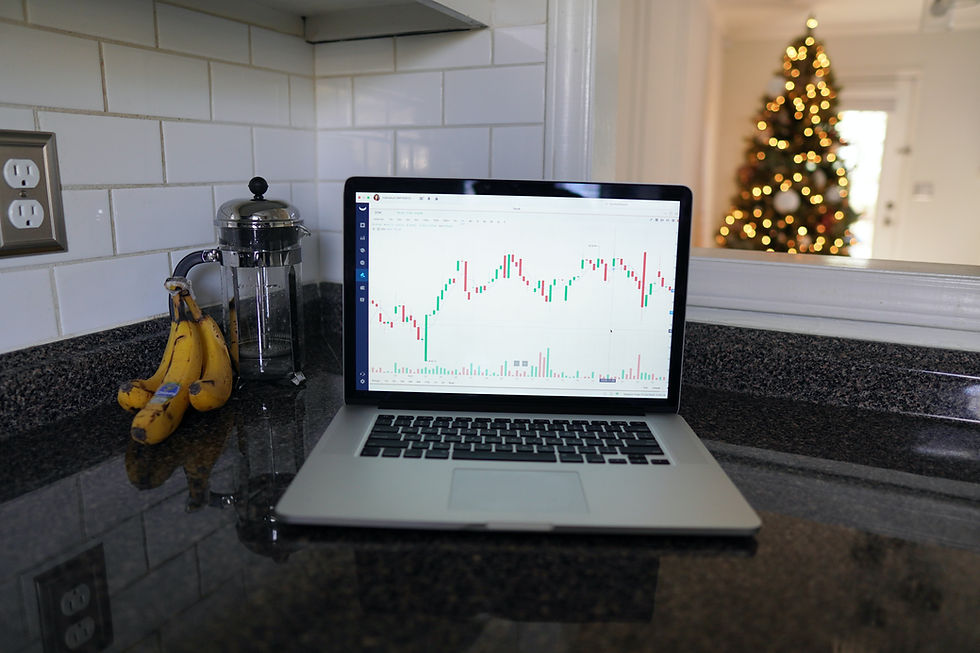On Chain Analytics 101: Tools Every Trader Needs to Master
- Money Dox

- Jul 21, 2025
- 5 min read
Unlock the power of on-chain analytics in crypto trading with must‑have tools like Glassnode, Nansen, CryptoQuant, Dune, Santiment & more.

Introduction
Thus, on-chain analysis has completely changed the world of the crypto trader. What differentiates on-chain analytics from traditional analysis is that the latter mainly depends on price charts and technical indicators, while the former goes on-chain to analyze data from transactions, wallets, and smart contract activities for deeper market observations. Using on-chain parameters, traders can watch whale activities, track exchange flow-ins and flow-outs, and try to determine impending market movements before they show up in price charts. This is a great help in the dynamic world of crypto trading, where real-time visibility beats off-chain lethargic signals that operate based on interpretation.
Understanding On-Chain Data
What Is On-Chain Data?
This is information that is recorded directly on the blockchain itself, and it has many forms/varieties - the core ones being:
Wallet Addresses: Specific codes that allow cryptocurrency owners to send and receive digital currencies.
Transactions: Movement of value between addresses.
Smart Contracts: Protocols that self-execute rules and situations regarding DeFi, NFTs, etc.
Important Metrics tracked by traders:
Active Addresses
Net activity during a daily period among addresses indicates network usage.
Transaction volume
Measuring total value sent on-chain to evaluate how much action is happening in the market.
Exchange Inflows/Outflows
Movement of coins to or from the exchange gives a hint of potential sell-pressure or accumulation.
On-Chain vs Off-Chain Data
Aspect | On‑Chain Analytics | Off-Chain Analytics |
Source | Direct blockchain records | Third-party APIs, social media |
Latency | Real‑time | Often delayed |
Transparency | Fully transparent | May be opaque or incomplete |
Use-Cases | Whale tracking, network health | Sentiment analysis, news flow |
Why On-Chain Analytics Matters for Traders
Early Signal Detection
Whale Movement: The tendency of large addresses (whales) to shift funds may operate as a precursor to price swings.
Trend Shift: The peculiarly unusual presence of newly created "active" addresses casts sudden bullishness and bearishness with their shadow.
Behavioral Insights
Wallet cluster behavior reveals smart money—for all practical purposes, hedge fund money or money owned and traded by so-called "smart" traders. By identifying "smart" wallets, Nansen and other similar platforms allow users to follow and mimic winning strategies.
Real-Time Transparency
Traditional financial markets often rely on post-facto information. Blockchains, however, arrange everything in real-time with maximal transparency, making sure traders can jump on the data immediately without waiting for days or weeks.
Case Study: Spotting a BTC Surge
In late 2024, on-chain data indicated a significant uptick in BTC exchange outflows and a decline in active miner selling pressure. Traders who saw this divergence took long positions a few days before the 15% jump in BTC and made significant profits.
Essential On-Chain Analytics Tools
Find below the top platforms every trader should wind up knowing inside out, with links to explore further:
Glassnode
Glassnode offers a complete suite of on-chain metrics that cover:
Dashboard Insights: These include pre-built charts showing the network's health, exchange flow, and supply metrics.
Alerts: Alerts can be created for specific breaches, for example, if reserves on an exchange decline below a certain threshold.
On-Chain Indicators: Indicators such as SOPR (Spent Output Profit Ratio) and MVRV (Market Value to Realized Value) are on-chain indicators to observe market cycles.
Best For: Traders interested in the refined, easy-to-use indicators without the skills to write SQL queries.
Nansen
Nansen is second to none in wallet labeling and tracking of smart money:
Smart Alerts: It sends notifications when vetted wallets (for example, "Binance," "DeFi Whale") transfer any funds.
Insights for NFT & DeFi: tracking NFT collections and DeFi protocols to detect potential new trends.
Best for: Anyone wanting to pursue activities of institutions or influencers, and get relevant information on the NFT market.
CryptoQuant
CryptoQuant tracks the network flow and exchanges data:
Exchange Reserves: It tracks BTC, ETH, and stablecoin balances on major exchanges.
Miner Flows: It tracks miner selling pressure, which gives a hint of short-term price predictions.
Network Metrics: These include hash rate, difficulty, and other indicators of network health.
Best for: Analysts interested in supply-side dynamics and institutional behavior.
Santiment
Santiment combines social data with blockchain data:
Sentiment Analysis: Trends of social media feeds, GitHub development activity, and On-Chain metrics.
Unique Indicators: Project health score, whale transaction alerts, and network growth metrics.
Best for: Traders who want sentiment and On-Chain signals combined for a holistic view.
Dune Analytics
Dune Analytics allows for the design and construction of custom dashboards:
SQL-Based Queries: Query raw blockchain data for bespoke metrics.
Community Libraries: Shared dashboards on TVL in DeFi, NFT floor price, etc.
Best for: Traders with data skills who want fully customizable analytics.
Arkham Intelligence, Lookonchain & Whale Alert
Arkham Intelligence specializes in adversarial transactional graph analysis, whereby the hidden relationships behind wallets can be identified.
Lookonchain: Delivers real-time alerts, soothing big token transactions and engagements on smart contracts.
Whale Alert: Services with Twitter broadcasting noteworthy transfers through different ecosystems.
Best for: Staying on top of Japanese sessions and larger transactions that could potentially move the market.
How to Use These Tools Effectively
Alerts & Dashboards
Alerts should be configured for exceptional cases of on-chain occurrences, such as large amounts transferred as tokens or funds being withdrawn from an exchange.
Linking the Metrics to Context
Use on-chain confirmation against technical analysis (TA) and fundamental research to filter out the false positives.
Cross-Check Platforms
Use an external platform or tool to verify a few data points.
Maintaining a Trading Journal
Document every triggered trade idea involving on-chain metrics; later review positive or negative outcomes to approve or disprove the criteria behind it.
Common Pitfalls to Avoid
Misreading Whale Transactions
If anything, these massive transfers only indicate possible market moves, some possibly being internal treasury moves or staking deposits.
Noise Is Data Without Context.
Possible active addresses spike could arise from a one-time airdrop or smart contract update, but no real growth of users.
Need To Cross-Examine Before Trusting
Every analytics tool employs a different data-processing method. Cross-verification keeps the blind spots in check.
Ignoring Market Sentiments
On-chain metrics are powerful, yet social and macro-factors can quickly override pure data signals.
Future For On-Chain Analytics
AI & Automation
Machine learning models would be increasingly put into play to predict price movements based on intricate on-chain and off-chain patterns.
Emancipation of New Metrics
New on-chain metrics such as liquidity pool utilization and NFT rarity flows will soon gain recognition and become popularized.
Integration with Trading Bots
Automated strategies reacting immediately to on-chain triggers will facilitate full automatic execution, enabling round-the-clock marketplace activity.
Conclusion
On-chain analytics has now become a must-have for crypto traders who want to gain an edge in their trading calculations. It is the know-how that comes from investigating tools such as Glassnode, Nansen, CryptoQuant, Santiment, or Dune Analytics as well as real-time monitoring systems like Arkham Intelligence or Whale Alert in order to derive signals from blockchain data. Start modest: choose 1 or 2 metrics, test them in actual trades, and then build your confidence. Follow the smart money, but always think smarter.



Comments